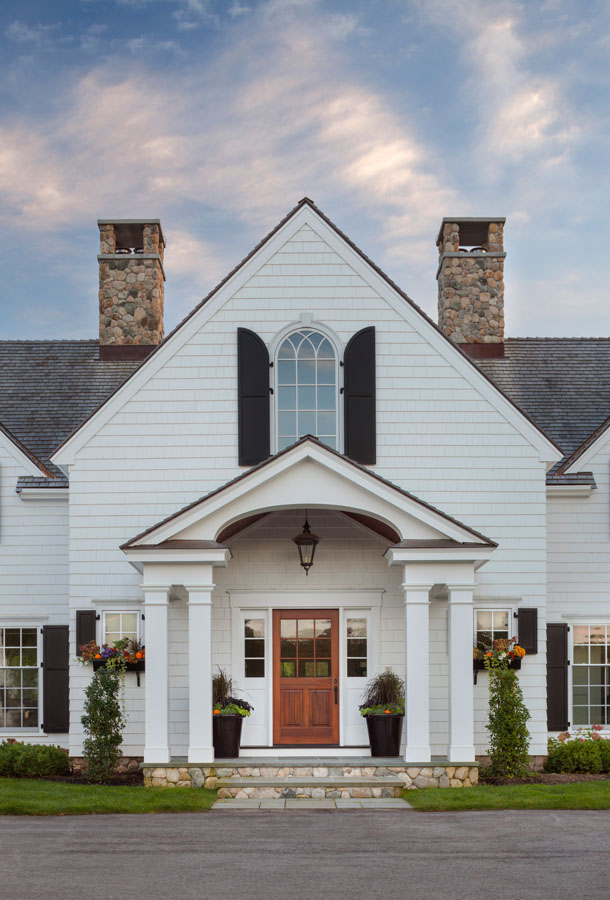Columns have been a part of architecture seemingly since the beginning of time. Stylistically they’ve evolved since their use in ancient Egypt, Greece and Rome, but their functionality in carrying a great deal of weight persists. In our historically-inspired new builds and restoration work, columns are most often found on a home’s exterior, and the question of which style to use depends wholly on the theme of the residence.
Columns are typically comprised of three separate components, and the combination of those pieces helps to indicate the character of a house. Below, we aim to demystify this enduring architectural element.

The Base
In ancient Greece, some columns rose directly from the floor below, but in modern day, nearly all columns sit on a base. The base may be square or round or a combination thereof. In some instances, mountain homes for example, a more substantial stone base may support the weight of a tapered wood column above. On other homes, bases may be larger and square featuring inset molding, indicative of a more formal exterior. At a traditional shingle style property, a shingled or fieldstone base is often seen to add authenticity to the residence.


The Shaft
The tall vertical portion between the base and the top of a column is referred to as the shaft. Shafts may be round, square, or polygonal, and depending on the period of the home may be solid or fluted. Timeless architecture most often features round or square columns without fluting or fuss. Considered more upscale than the square shaft, the round shaft is typically seen with Georgian architecture against a brick facade. More casual presentations may feature a square shaft, especially in contemporary interpretations. Depending on the scale of the house, the shaft may be straight or tapered for visual variation.

The Capital
The capital is made up of three distinct pieces. The necking is just above the shaft, beyond that sits the echinus, and the abacus tops the element. As a supporting slab atop the capital, the abacus is nearly always square. In ancient times it would have acted as a buffer in between volutes, leaves, or other decoration in the echinus and the weight of a building. In timeless architecture our capitals are typically very reserved, without fanfare or flourishes from long ago.

Whether supporting a portico, the weight of a second story porch, or countless other use cases indoors or out, the style of home will dictate the chosen style of column. If thinking about columns has you re-thinking your own home’s presentation, contact us to learn how we might approach the project. In the interim, we hope you’ll find meaningful inspiration in our portfolio.